
Sacred Texts Earth Mysteries Index Previous Next

IN MANY OF THESE WORLD TREE PICTURES we have seem World Mountains as well, but northern ones mostly. Yet the concept of the antipodal polar mountains of Earth is very old. They stand opposed to each other in the Babylonian Universe (Plate VIII). They are inherent in the very idea of an Underworld to this Over-world, whether the idea is carried to its logical conclusion or not. As above, so below. If the World Mountain of
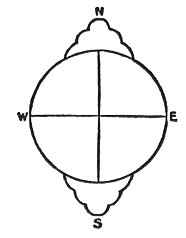
FIGURE 53. The Antipodal Polar Mountains.
(From Paradise Found; William Fairfield Warren, 1885.)
the North was the abode of gods, the abode of demons was--the World Mountain of the South. Fig. 53 illustrates

Click to enlarge
PLATE XXIV. THE ROSE TREE OF THE ROSICRUCIANS
(Frontispiece, Summum Bonum; Robert Fludd, 1629)
not only the antipodal mountains of a spherical Earth, but also the "four quarters of the Earth," the abode of gods, of living men, of dead men, and of demons, beginning with the northern mountain and descending to the south.
It may be it is only because the popular concept of the figure of Earth swung more or less uniformly to that of a sphere after the western world was discovered, and all the continents of the Earth were mapped out, that we are apt to think the spherical concept is a modern one. As a matter of historical fact the Greeks established it in the minds of philosophers by at least 500 B.C., and it is certain that the idea did not originate with them. Its origin, like the origin of most of these concepts, is trackless, if for no other reason than that the concept of Earth as the Mundane Egg--a spheroid form--goes back into untraceable antiquity. More and more it seems that, in order to explain any of these recurrences, we must take almost literally Fechner's conception of a great reservoir in which lie pooled the memories of all of the Earth's vanished inhabitants, which now and then "opens," to let a little spill out into the minds of a few living men. For more and more it begins to appear as if always, somewhere on the Earth, all of these figures of Earth have existed in the minds of some of its people. Perhaps it may mean that the Earth has been all of these things, at different stages of its development, that it is constantly changing, never the same; that its changes are its life, and that, far from being a disintegrating, dying planet, it is a continuously evolving one, always undergoing the mysterious process of creation. But this is only a guess.
Certainly, thanks to the symmetrical speculations of the Pythagorean and Platonian Greeks, the theory of the antipodal region and the antipodal race of beings was so much a part of the science of the day, that it seemed necessary to St. Augustine, a thousand years later (fifth century A.D.) to establish some sort of a theory of the figure of the Earth, which, although retaining its supposed spherical
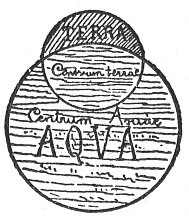
FIGURE 54. The Theory of Two Centres. Spherical Earth with no Antipodes. (After Rainaud.)
(From The Siege of the South Pole; H. R. Mill, 1905.)
form, should nevertheless cast the theory of the antipodes into everlasting disrepute. The theory of two centres," or the theory that the Earth was composed of two spheres, one of land, and one of water, contained one within the other, but not concentric, solved the problem exactly of retaining the sphere and rejecting the antipodes. The terrestrial globe rose a little from the watery sphere, and it was, of course, the northern part of the Earth which so rose. When it was objected to, by some, on the ground that only lighter elements rise to the surface of water, and the denser irresistibly sink, the two-centre theorists
promptly replied that the terrestrial sphere rose only a little from the water, as an egg, plunged into a water-filled basin, would rise a little to the surface; and they asserted farther that these two spheres signified the true meaning of the "separation" of land from water. But Strabo, several hundred years before, facing the problem of the density of the elements, accounted for it much more simply. It was true, he said, that by nature the water was higher in situation than the Earth, and in the beginning of things compassed it all about like a sphere. But since Providence designed to create animals and chiefly man, a creature not belonging to the water, God therefore "raised the Earth," and caused it to dwell in diverse places; and in others he sunk it and made it hollow, that the waters might lie hid, and that dry land might appear over it and thus afford a seat for man and other animals of the land.
What made the Early Church combat the idea of a southern habitable hemisphere was not so much the difficulty of explaining how men could stand "feet to feet," as the difficulty of explaining why races of men, all sons of Adam, should be utterly cut off and separated from each other by the impassable belt of fire that circled the Earth. There seemed no reason or purpose in this that could be called divine; this was the heresy. But it was also true that the literal mechanics of an inhabited antipodal region, without the convenient theory of gravitation to explain everything, was too much for reasonable man to accept without an admirable struggle.
"What are they," said Lactantius, a fourth-century
[paragraph continues] Father of the African Church, "that think there are Antipodes, such as walk with their Feet against ours? do they speak with any likelihood; or is there any one so foolish as to believe that there are Men whose Heels are higher than their Heads? that things which with us do lie on the Ground, do hang there? that the Plants and Trees grow downwards, that the Hail, and Rain, and Snow fall upwards to the Earth? and do we admire the hanging

FIGURE 55. ''Feet to Feet.''
(From Physiologia Kircheriana Experimentalis, 1680.)
[paragraph continues] Orchards among the Seven Wonders; whereas here the Philosophers have made the Fields and Seas, the Cities and Mountains hanging? What shall we think, that Men do cling to that Place like Worms, or hang by their Claws as Cats? or if we suppose a Man a little beyond the Center, to be digging with a Spade, is it likely (as it must be according to this Opinion) that the Earth which he loosened, should of itself ascend upwards? Or else suppose two Men with their Middles about the Center, the Feet of one being placed where the Head of the other is, and so two other Men cross them, yet all these Men thus situated, according to this Opinion should stand upright; and many
other gross Consequences would follow, which a false Imagination is not able to fancy as possible."
IN THE Universe of the Lamas (Plate XXV) we come upon the very greatest of the Mountains of the World, Mount Meru, the universal hub, the support of all the worlds. Meru is also the "Garden of the Tree of Life," for the Jambu or Rose Apple World Tree springs from it. This Tibetan Universe is not only a beautiful but a complex universe as well, and it is going to be difficult to describe its many divisions simply and directly. 1
But first of all, say the Lamas of Tibet, this world of ours is merely one of a series, which all together form a universe or Chiliocosm of which again there are many. Each universe is set like a jewel in illimitable space, upon a warp or woof of "blue air" or wind. Crossed thunder-bolts are the symbols of this "blue air," which is hard and indestructible, like a diamond. Upon this "warp" or "woof" is set "the body of the waters," and upon this is a foundation of pure gold, on which is set the Earth. From the Earth's axis soars Mount Meru, crown of the world, which rises to a height of 84,000 miles before it is surrounded by the heavens. It is likened to "the handle of a millstone," and half way up its southern side is the Jambu, or Rose Apple Tree, the object of combat between the gods and the Titans. From its root four inexhaustible rivers
take their source. It bears an immortal fruit, like gold, which falls into the rivers, and from its scattered pips comes the golden seed which is carried down to the sea, and is, sometimes, washed up again on its shores.
In the ocean about Mount Meru lie the four continents, each with two attending "satellites," and all with bases of solid gold in the form of a tortoise. But the continents are separated from the sacred Meru by seven "stages" or golden mountains, between which flow seven oceans of seven substances: fragrant milk which is churned by the gods, curds, butter, blood or sugar-cane juice, poisons or wine, fresh water, and salt water. Encircling all these divisions is a double iron wall which shuts off the light of the Sun and the Moon of each universe from all the space which intervenes between it and the succeeding universe. No ray of light illumines the void between the "thousand-thousand" universes. This is the "outer darkness."
The orbit of the Sun or "glazed fire," and of the Moon or "glazed water," is the summit of the innermost ring of mountains, called "The Yoke." Between these two heavenly bodies hang the jewelled umbrella of the kings and the banner of Victory--these are shown in the figure. In their realm of air, on this same plane, live the eight angelic "mothers."
The "four continents" are placed exactly in each of the four directions, and they are of four different shapes, corresponding to the four forms of the four elements (Fig. 1). To the north lies the cube or earth-shaped body; to the west the sphere or water-shaped body; to the south the triangle or fire-shaped body, and to the east the
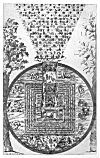
Click to enlarge
PLATE XXV. THE UNIVERSE OF THE LAMAS
(From The Buddhism of Tibet, or. Lamaism; L. Austine Waddell, 1899)
The following image was scanned directly from the original book, and is higher resolution than the previous.
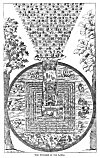
Click to enlarge
THE UNIVERSE OF THE LAMAS
(From The Buddhism of Tibet, or. Lamaism; L. Austine Waddell, 1899, p.78)
crescent or air-shaped body. Of the four continents, they say that all except Jambudvipa (F) are fabulous, but they are described as follows:
"On the East is Videha, or 'vast body' (P). This is shaped like the crescent moon, and is white in colour. It is 9,000 miles in diameter, and the inhabitants are described as tranquil and mild, and of excellent conduct, and with faces of the same shape as this continent, i.e., crescentic, like the moon.
"On the South is Jambudvipa (F), or our own world, and its centre is the Bodhi-tree at Budh Gaya. It is shaped like the shoulder-blade of a sheep . . . is blue in colour; and it is the smallest of all, being only 7,000 miles in diameter. Here abound riches and sin as well as virtue. The inhabitants have faces of similar shape to that of their continent, i.e., somewhat triangular.
"On the West is Godhanya, or 'wealth of oxen' (I), which in shape is like the sun and red in colour. It is 8,000 miles in diameter. Its inhabitants are extremely powerful and (as the name literally means cow + ox + action) they are believed to be specially addicted to eating cattle, and their faces are round like the sun.
"On the North is Uttara-Kuru, or 'northern Kuru'--tribe (M), of square shape and green in colour, and the largest of all the continents, being 10,000 miles in diameter. Its inhabitants are extremely fierce and noisy. They have square faces like horses; and live on trees, which supply all their wants. They become tree-spirits on their death; and these trees afterwards emit 'bad sounds.'
"The satellite continents resemble their parent continent
in shape, and each is half its size. The left satellite of Jambudvip, namely, 'The ox-tail-whisk continent,' is the fabulous continent of the Rakshas, to which Padmasambhava is believed to have gone and to be still reigning there. And each of the latter presents towards Mount Meru one of the following divine objects respectively, viz., on the east (? south) the mountain of jewels, named Amolikha, shaped like an elephant's head, and on the south, the wish-granting tree, on the west the wish-granting cow, and on the north the self-sprung crops."
As for Mount Meru--some say that these four gifts of the left satellites are situated on the sides of Meru itself--which has square sides of gold and of jewels. Its eastern face is crystal or silver, like the colour of the eastern continent. The southern face is sapphire or lapis lazuli. The west side is of ruby, and the north side is gold. Mount Meru is always covered with fragrant flowers and herbs.
It has four lower compartments under the heavens. The lowest is inhabited by the Yaksha genii holding wooden plates. Above live the "wreath-holders." Above these dwell the "Eternally exalted ones," and above them the Titans, the race of beings who contend always with the gods for the Jambu or Rose Apple Tree. Originally gods, the Titans were, like Satan, thrown out of heaven, and their place in the Tibetan system is intermediate between heaven and Earth.
Above the Titans, at a distance of 168,000 miles, are the realms of the gods. In the lowest compartment are the "four great guardian kings of the quarters," the white guardian of the East, the green guardian of the South, the
red guardian of the West, and the yellow guardian of the North, who forever guard the heavens against attacks of outer demons. The eight great classes of supernatural beings are subjects of these kings, and these guardians of the four quarters are aided by the ten Lokpals who watch the ten directions, that is, the eight points of the compass, and above, and below.
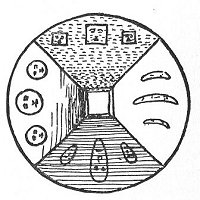
FIGURE 56. A Kalmuck World-picture.
(From Mythology of All Races, Vol. IV, 1927.)
A Kalmuck World-picture (Fig. 56) is quite worth comparing with this. Universe of the Lamas, for the Kalmucks, now of Russia, primitively inhabited China. They arrived on the shores of the Caspian Sea about 1600, but they brought with them their own conception of the world, with its colours and shapes. This drawing shows Mount Su-meru in the centre of the world, through whose centre the World Tree springs. Sometimes they will say
that each of the four mountain sides bears a tree. Su-meru is shaped, they believe, like a truncated pyramid, and around it are seven mountains and seven seas not represented in this drawing. The nearer a mountain ring is to the central mountain, the higher it is, they believe; and the higher the mountain rings, the farther they are from each other. The Kalmucks say also that the distance of each from the central mountain is the same as its height.
The colours of the four sides of the truncated Su-meru are like those of the Tibetan Meru, and the Kalmucks also place four continents in the four quarters, each of a different shape, and each accompanied by two smaller "islands" of like shape; so that again the total number of islands surrounding the centre of the world is the zodiacal twelve. The Tibetan Jambudvip--the southern continent--which was "shaped like the shoulder-blade of a sheep," and whose inhabitants had faces shaped similarly, "somewhat triangular," is slightly modified in the Kalmuck picture to an oval continent inhabited by an oval or "egg-faced" race. But it is almost the same; an "oval" such as this is hardly more than an expanded or expanding triangle and the egg-shaped islands and faces may be called with a fair accuracy "somewhat triangular."
No claim for particular beauty and certainly no claim for any antiquity is made for the Chinese hemisphere shown in Fig. 57, drawn, says Dr. Du Bose, by a monk in Soochow, who perceived that times were changing, that the new geography was of a spherical Earth and not of a "World Mountain," but who realised that the North Pole is permanent--if anything is. He therefore drew a conventional
modern hemisphere with its lines of latitude and longitude, over which he traced Europe-Asia-Africa; and then, upon the top of the world, raised his World Mountain,
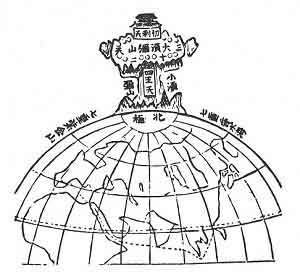
FIGURE 57. Mount Su-Meru of the Chinese.
(From Dragon, Image and Demon; H. C. Du Bose, 1887.)
peerless Su-meru, spine and marrow of "the thirty-three heavens," and situated in the very centre of the world. Its shape is ordinarily that of an inverted cone, whose medial line is cut by the Earth's surface, whose base is above, and whose apex penetrates the Earth to a distance equalling the distance of its base from the Earth. Or, as the Chinese explain it, "Its depth in the sea is equal to its altitude (in the air)." In the undersea division are the
countless hells. The unknown monk of Soochow made his Sacred Mountain resemble a pagoda more than a cone when he compromised with a new age, but a simple projection of the pagoda lines will result in a figure quite cone-like.
127:1 L. Austine Waddell's reading of this picture is followed here, as given in his Buddhism, or The Lamas of Tibet, pp. 77-121.